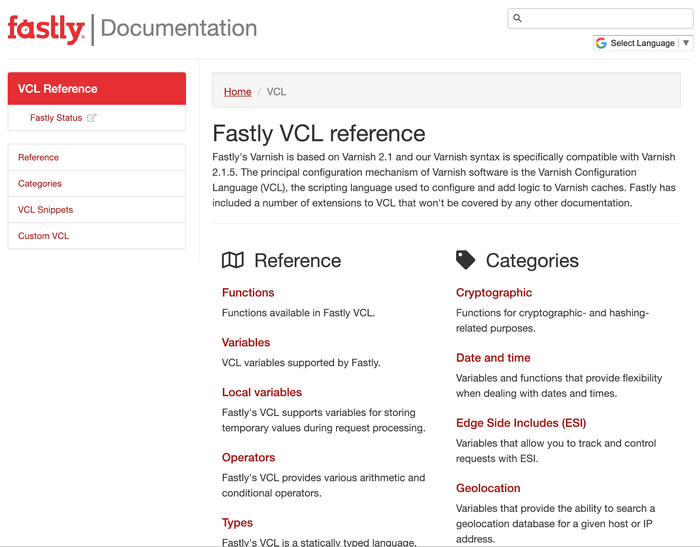Q4 2018
Hi Fastly customers + friends,
In Q4, we released several new features in general availability (GA) and limited availability (LA). We also brought online three new POPs, bringing our total global number of Fastly POPs to 57 and bringing our total connected edge capacity to 37.5 Tbps.
Below, you can delve into all that we’ve been up to this past quarter.
POP additions and enhancements: 57 global POPs
As of the end of Q4, Fastly now operates 57 POPs worldwide. We made additions and enhancements to POPs across three continents, enhancing performance and scalability for our customers and their users:
North America: deployed a new POP in Ashburn (BWI), a new POP in Atlanta (FTY), and a new POP in Chicago (CHI)
Europe: upgraded our Amsterdam (AMS) POP to our 25/100GE architecture, providing a significant increase in available capacity in the region
Australia / New Zealand: doubled capacity in our Auckland (AKL) POP
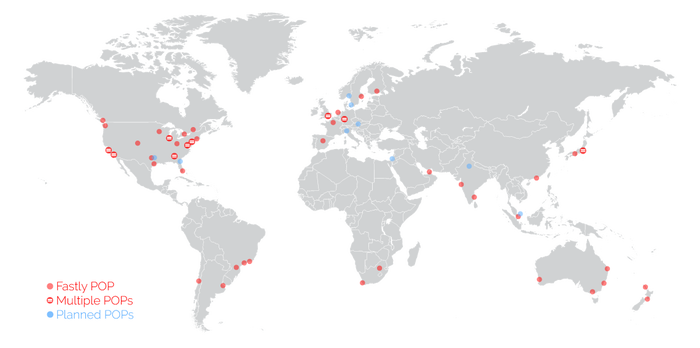
Network capacity update: 37.5 Tbps of edge capacity
The addition of our new POPs, paired with the network growth at existing POPs, yielded an increase of 11 Tbps of new edge capacity in Q4 — bringing our total connected edge capacity to 37.5 Tbps.
Fastly is now present at 67 Internet Exchange Points (IXPs). We joined the following new IXPs this past quarter:
EquinixIX in Stockholm (BMA)
Bharat IX in Mumbai (BOM)
This means that internet service providers (ISPs), enterprise companies, and cloud service providers (CSPs) can reduce network hops, enabling lower latency and more performant connections to our edge cloud, by interconnecting with Fastly directly at these IXPs.
Edge cloud technology launch
On November 20, we announced several use cases for our edge compute technology — which empowers businesses to innovate, as we move data and applications as close as possible to their end users. We surfaced real-world customer examples from today’s leading brands, like Reddit and HotelTonight, that have built their own logic and applications on Fastly’s edge cloud platform. These use cases involve features like edge redirects, content targeting, A/B testing, edge authentication, and feature flagging.
We’ve seen continued adoption of our edge cloud platform at scale, with more developers using edge computing to grow and evolve online business. Since the launch of our edge compute technology launch last year, we saw an increase of over 70% in edge compute traffic, and a nearly 150% increase in the use of our edge compute features. With edge compute technology, businesses meet customer expectations for secure, zero downtime, high speed, and personalized experiences at scale. This is a natural extension of the heart of our platform: Fastly is built by and for developers to write and deploy code instantly at the edge.
Fastly Labs launch
Fastly Labs is a hub for the developer community at large to access Fastly’s latest projects and innovative ideas, aimed at honing in on research that will help solve the internet’s big challenges. Fastly Labs also as an interactive space for feedback and safe experimentation with edge innovation.
The first three projects to kick off Fastly Labs are:
Terrarium is an experimental project which moves edge computing past the limitations of existing serverless implementations, and frees users from the need for specific languages, APIs, or proprietary add-ons that stymie innovation and cause vendor lock-in. Terrarium allows for experimentation with the next generation technology that will power Fastly’s platform at the edge.
Fastly Fiddle allows developers to quickly and seamlessly trial, debug, and test custom VCL on the Fastly platform. Similar to other front-end developer tools like JSBin and Codepen, Fastly Fiddle lets developers write and test code rapidly on Fastly’s edge without having to set up servers. Fiddle allows developers to experiment with new ideas on Fastly’s current platform, without affecting their production service.
Fastly Insight with it developers can opt-in to a program built on Fastly’s edge, which aims to improve network performance by charting the topology of the internet. Insights is a living, breathing example of the kind of project that can be built and grown at the edge.
Meaningful insights with real-time logging: endpoints update (GA)
We recently released logging endpoints for Honeycomb and Splunk into GA, as well an update to Google BigQuery — all of which gives businesses more control, and makes it easier to view traffic, understand site health, and make changes quickly. We also released into GA our logging endpoint integration with Azure Blob Storage, which is optimized for storing massive amounts of unstructured data.
Part of this work involved performance enhancements to the logging pipeline, which will help us scale as our customers continue to utilize our real-time logging capability. This increases the number of integrations popular with enterprises, bringing the total number of endpoints to 17.
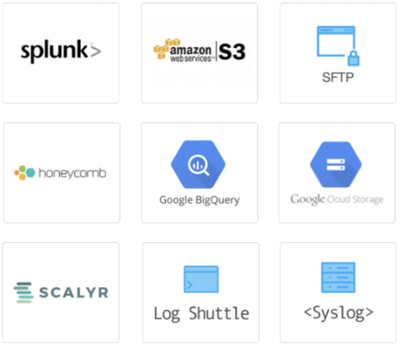
Live Event Monitoring Service (LA)
We officially released a new Live Event Monitoring Service, which lets customers reserve support resources so they can proactively monitor high-value events (like awards shows, sports games, holiday and flash sales, and product or service launches). Customers can purchase the Live Event Monitoring Service to leverage Fastly resources as an extension of their own teams, with proactive monitoring, alerting, and troubleshooting throughout their events. This results in a smooth operational experience for our customers, and an optimal experience for their end users.
User experience
Navigation enhancements: In November, we changed top navigation of our UI to combine something confusing to users (real time vs. historical stats) — and make more effective use of precious real estate. The content and functionality haven’t changed, but we improved navigation to make it easier for users to do what they need to do.
Edge dictionaries: This month, we shipped the user interface (UI) for edge dictionaries. Before this release, customers had to know edge dictionaries existed, then read docs to understand how to properly leverage them. By using edge dictionaries in the UI, customers can more easily make changes they need. Plus, it’s another way we’re surfacing the value of Fastly’s platform to customers.
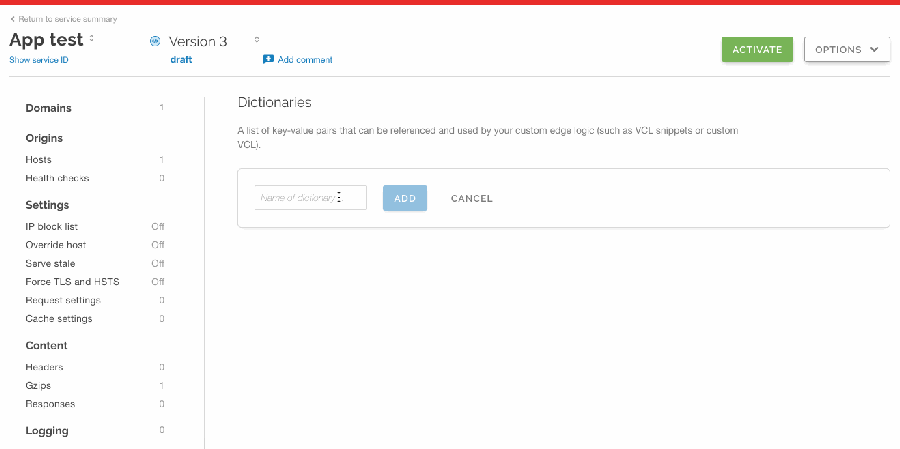
Quick config: Quick configs are a reusable design pattern, exposing key features of Fastly’s platform in a one-click format that makes it easy for customers to use. Our Design team has been optimizing the use of quick configs to balance the flexibility and customizability of our platform with the need for something simple and easy-to-use.
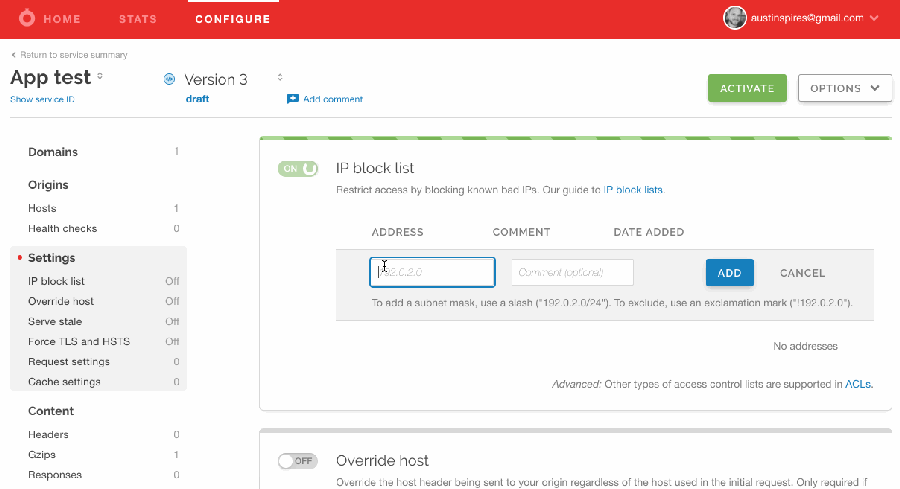
Docs updates
Below are some key highlights from the quarter, but you can also visit our our documentation changelog for a complete list of updates.
Web Application Firewall (WAF) RSS and JSON feeds: In October, we introduced RSS and JSON feeds for our WAF ruleset updates so you can keep tabs on new rulesets.
Summary Product Definitions: We recently published plain-English definitions of Fastly’s key product offerings and will continue to update the list as new products get released.
Varnish Control Language (VCL) reference updates: Since its launch earlier in 2018, we’ve continued to improve and add to our VCL language reference. We’ve added reference material for many undocumented variables and functions and continue to add examples for them.
